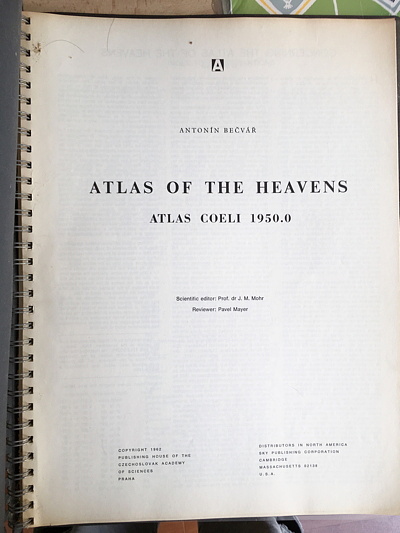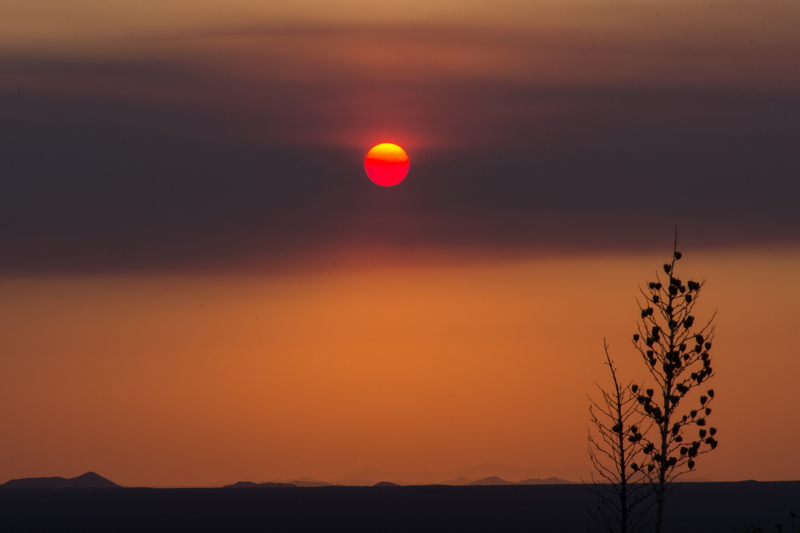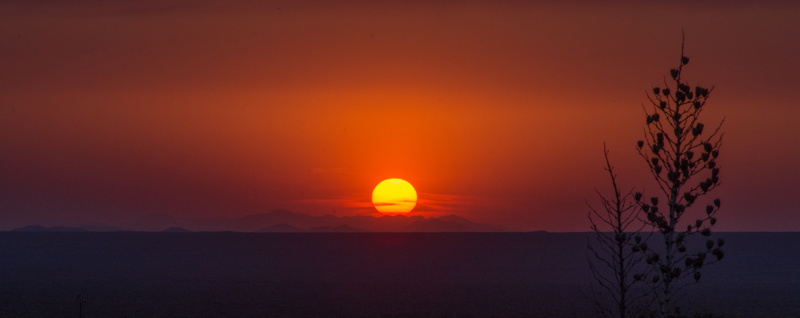Smokey Sunset, DSO observing,
Galaxy Clusters imaging, LX600 test, Scorpius planets
Posted: 4 June 2016
Smoke from a wildfire east of Phoenix continued to impact our skies on Friday, 3 June 2016. An animated satellite view in a tweet Friday night by Dr. Matthew Pace of 12News in Phoenix shows the smoke.
|
Open: Friday, 3 June 2016, 1819 MST Temperature: 105°F |
Session: 977 Conditions: Clear, but smokey, breezy |
Equipment Used:
12" f/8 LX600 w/StarLock
Wireless AutoStar II handset
2" 24mm UWA eyepiece
2" 8-24mm zoom eyepiece
1.25" 15mm eyepiece
Focal Reducer
Camera:
D7200 DSLR
iPhone 6s Plus
When I was a teenage amateur astronomer back in the early 1960s I always dreamed of having a nice atlas of the sky to aid in observing Deep Sky Objects (DSOs). Unfortunately, they were expensive (to me) so I never got one. I did have a "Norton's Star Atlas" back then, which served me and my Edmund 3" Newtonian telescope well. I recently received a collection of books from a local resident and one of the books was the "ATLAS OF THE HEAVENS" (1962), which I would have loved to have owned back the 1960s:


So now that I have this wonderful Atlas I decided to put it to use at Cassiopeia Observatory. After opening the observatory I began perusing it while waiting for sunset to see what I might observe this night. I decided to view the Virgo Galaxy Cluster. This is the Virgo Galaxy Cluster as depicted in the Atlas:

As sunset approached the smoke from the wildfire was mainly visible in the west:

The smoke certainly made the setting Sun red:


1935 MST: LX600 ON, StarLock OFF. Viewed Jupiter and the four Galilean Moons, 102X.
2002 MST: dome OFF (onto PZT). I then spent some time re-routing the StarLock cable to make it as short as possible while still allowing for sufficient length when slewing the telescope in Declination.
2032 MST: after receiving a notification from SkySafari 5 Pro I watched an "Iridium Flare". It was a very gradual increase in brightness but was not a very bright flare.
Then viewed Mars, 102X, but it was too low in the southeast for good viewing.
2050 MST: StarLock ON. Did a StarLock Polar Alignment to check if the mount had moved since the last Polar Alignment. The StarLock reported that no mount adjustments were needed in Latitude or Azimuth.
Slewed to Spica, centered it in the 24mm eyepiece (102X), then SYNCed the AutoStar and StarLock. Turned on High Precision GOTOs. Did a GOTO to NGC4874 (member of the Coma Galaxy Cluster); StarLock placed it in the center of the eyepiece field-of-view (FOV). Also in the FOV was NGC4889 (another member of the Coma Galaxy Cluster).
2112 MST: StarLock OFF, High Precision OFF. Began using the "ATLAS OF THE HEAVENS" to observe the Virgo Galaxy Cluster, 102X. I first did a GOTO to M86 (cluster galaxy) (and yes, that was cheating a little). Seven more galaxies were easily seen in the FOV. I compared the eyepiece view with the galaxies as shown in the Atlas. I observed several more galaxies within about a degree of M86. Unfortunately, the smokey sky was hampering the view. 2136 MST: ended using the Atlas due to the poor seeing conditions.
Began setting up to image the Virgo Galaxy Cluster. I had previously imaged the Cluster using the 8" LX200-ACF telescope in 2011. This would be my first image of the Cluster with the 12" LX600. I mounted the D7200 DSLR at prime focus + visual back + focal reducer. Slewed to Spica, StarLock ON, and did a focus test using the Bahtinov Mask. I then locked the mirror using the bolt and nut technique suggested by Meade (since, surprisingly, the 12" LX600 does not have a built-in mirror lock). I had to slightly defocus the image of Spica in order to bring it into focus as the nut was tightened. Eventually I got it correct. SYNCed the StarLock on Spica with it centered in the camera FOV. Slewed to M86. Unfortunately, the StarLock would not lock on to any guide star. I slewed the telescope around a little bit to try to help it to find a guide star but that didn't help. Apparently the smokey sky was preventing locating a suitable guide star for the StarLock. StarLock OFF. This is a 1 minute, ISO 12800, White Balance 4000K, unguided exposure, of a portion of the Virgo Galaxy Cluster, showing many galaxies:

There was some image trailing in Right Ascension (RA). I will update the RA PEC (Periodic Error Correction) on a future session when the smoke is gone.
Slewed to NGC4874 (galaxy in the Coma Galaxy Cluster). StarLock ON. This time it locked onto a guide star. Set the RA and DEC autoguiding rates to 75% each and did a test exposure; stars trailed. Set the guide rates to 10% each, which resulted in this 1 minute, ISO 12800, White Balance 4000K, guided exposure of the Coma Galaxy Cluster:

Again, several galaxies are visible even in this very short exposure.
2227 MST: ended galaxy imaging. Removed the camera and bolt. Viewed NGC4874 and NGC4889 galaxies, 102X. Then moved the dome back onto the observatory wall. 2245 MST: viewed M57 (Ring Nebula), 102X. The StarLock did a good GOTO. Then viewed M56 (globular cluster), 102X. StarLock OFF.
Next, I viewed Epsilon Lyrae (the "Double-Double Star"), 102X. I noticed something odd while viewing with the 24mm eyepiece. I switched to the Baader 8-24mm Zoom Eyepiece and used various magnifications to confirm what I was seeing. I then used a 15mm eyepiece (163X) and confirmed the same observations. What I was seeing was that when one component of Epsilon Lyrae was centered in the eyepiece it was easily split. However the other component (~90 degrees different orientation) could NOT be split when it was centered. Since the separations of the components are similar, obviously they both should have been split. This seems to confirm that something is not right with the position of one or both telescope mirrors. I have passed this observation onto Meade.
2314 MST: viewed Mars, 163X. The North Polar Cap and some limb clouds were visible. Tried viewing Mars at 305X but seeing was not good enough. Then viewed Saturn. Best view was at 203X.
The last thing I did this session was to photograph the constellation of Scorpius with Saturn and Mars using the iPhone 6s Plus. This handheld photo was taken using the iOS app "NightCap Pro", Light Boost, ISO 8000, 1/4sec:

Mouseover or tap on image for labels
|
Close: Friday, 3 June 2016, 2343 MST Temperature: 77°F |
Session Length: 5h 24m Conditions: Clear, smokey, calm |
Comments are welcome using Email. Twitter users can use the button below to tweet this report to your followers. Thanks.
Cassiopeia Observatory Home Page
Copyright ©2016 Michael L. Weasner / mweasner@me.com
URL = http://www.weasner.com/co/Reports/2016/06/04/index.html
